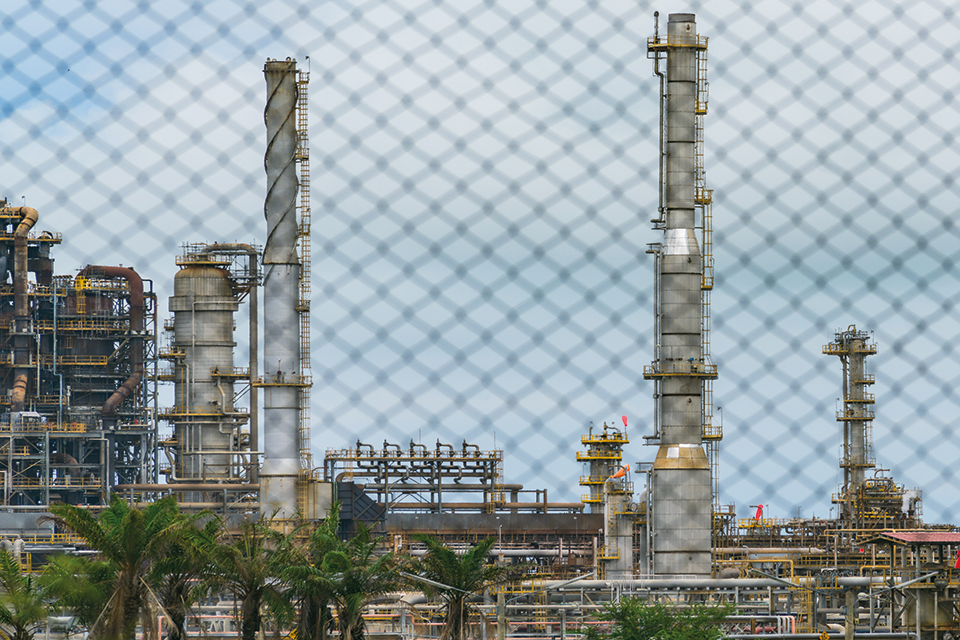2019-01-17
Fence-line Monitoring: Benzene and Beyond

Measurements of ambient air quality close to industrial facilities are sometimes referred to as fence-line monitoring, in particular if the ambition is to evaluate the facilities’ contributions to the air pollution situation.
Fence-line monitoring can be of great importance and value in the vicinity of any potentially air-polluting industry, including oil and gas refineries, chemical production facilities, and metal smelters. An OPSIS open-path system is very well suited for this application since it captures the average concentrations along optical measurement paths, and not just concentrations in sampling points which might not catch what happens at other positions along the fence.
Fence-line systems can serve at least three different purposes, all which can be fulfilled with a single monitoring system:
- To act as an alarm system in cases of accidental releases of air pollutants.
- To allow back-tracking of the pollutants to the sources of emissions for further actions.
- To assess the air quality in general.
The driving forces for monitoring can be directives from national environmental authorities, but it can also be on initiative from local governments or the industry itself. In either case, the overall purpose is usually to protect the human health. An example of this is a regulation issued by the U.S. EPA, requiring fence-line monitoring of benzene along the perimeters of refineries in the United States.
The pollutants to monitor depends on the type of industry. In the case of refineries, the concentrations of one or more light hydrocarbons can be of interest. All potentially existing pollutants can often not be monitored, but it can be sufficient to select one or a few significant pollutants and allow those to reflect the general status of the air. That is the case in the U.S. EPA fence-line regulation where benzene has been selected as the gas to survey. There can be other hydrocarbons in the air too, but benzene is considered to represent them all.
Benzene can be of interest to monitor not only around refineries, but depending on production process also at chemical industries in general. However, here, the choice of monitored pollutants can also be quite different. By example, around a fertilizer production facility, it should be more relevant to monitor ammonia (NH3) and possibly hydrogen fluoride (HF). Around metal smelters, it is most likely sulfur dioxide (SO2) or perhaps HF that would be the prioritized parameter to keep track of.
While at it, the added cost to monitor other ambient air quality parameters too, like ozone and nitrogen dioxide, is relatively small. That’s why a fence-line station very well can double as a general air quality monitoring station. However, a practical price to pay for adding more gaseous substances to monitor can be a potential lag in response time if the concentration of a specific pollutant suddenly rises. Time-critical systems aimed at issuing alarms in case of increased levels of a specific pollutant should therefore be dedicated to that pollutant only, or possibly just a few prioritized ones.
Combining the gas monitoring equipment with meteorological data including wind speed and wind direction allows in-depth studies of the sources of emissions of pollutants. It can be a matter of estimating the emission rates from known sources, but it can also be used to detect unknown leakages in pipes and valves used in the production process. The results can thereby be not only of environmental interest but also of importance to production quality and economics.
Over the years, OPSIS has successfully supplied many systems for fence-line monitoring, both around refineries, fertilizers, smelters, and other types of industries. The systems help protecting the employees at the facilities as well as the population and the environment around the facilities. They also give data to the facility operators, which can be used to assess the environmental impact of the industry as well as to catch leaks and to improve process efficiency and the quality of the produced goods.
